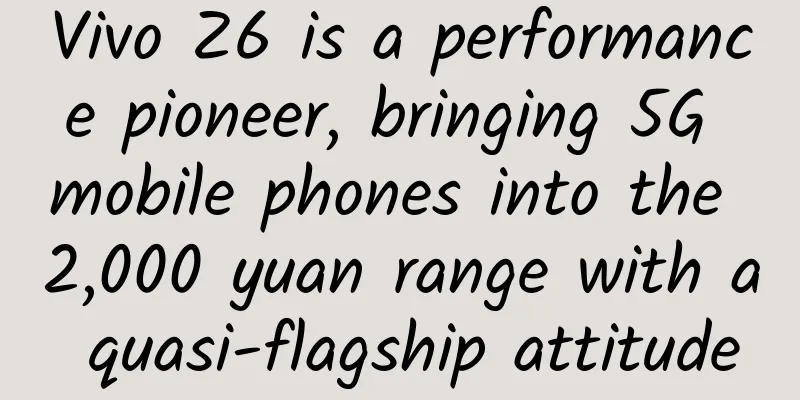How to send "space express"? The most complete delivery process! |Young stargazing at the stars and chasing dreams

|
Young looks at the stars and chases the stars and dreams Before we know it, time has already arrived at the door of 2023. Looking back at the past 300 days and nights, it seems like a series of steps, each of which records the development of China's aerospace industry. As the New Year's Day is approaching, we have prepared the 9th season of the "Young Stargazing, Chasing Stars and Dreams" popular science New Year's Eve event for our readers. Please join us for an exciting journey of chasing stars and dreams! Reviewer: Zhao Liangyu Associate Professor, Flight Control Department, School of Aeronautics and Astronautics, Beijing Institute of Technology On November 30, 2022, the Shenzhou 15 crew and the Shenzhou 14 crew successfully "met" in space, achieving a new breakthrough of having six astronauts in orbit at the same time, and completing the first "space shift" of Chinese astronauts. The Shenzhou-14 and Shenzhou-15 crew space group photo Source: CCTV Everything astronauts need for living and working in space is transported from Earth to the space station. So, how does each "space express" cargo spacecraft accurately find the address of the space station and deliver the goods? This technology is called spacecraft rendezvous and docking technology, which is a technology that allows two spacecraft to meet in orbit and structurally connect them into a whole. It is an important technical support for realizing round-trip transportation between the earth and the space station, the assembly of multi-module space stations, and future lunar landing activities. 1 Find out the orbital rules Most spacecraft (satellites, space stations, etc.) fly around the earth along fixed orbits, and the orbit types include circular orbits, elliptical orbits, etc. Our space station's flight orbit is a circular orbit, which moves in a nearly uniform circular motion around the earth. If you want to successfully dock a spacecraft, you need to understand the laws of orbital motion, which is the basis for finding the "address" of the spacecraft. The space station flies in an orbit about 400km from the earth and can circle the earth in 1.5 hours, while the flight altitude of the geosynchronous orbit satellite is about 36,000km. Under the influence of the earth's gravity, the closer the flight orbit is to the earth, the shorter the time it takes for the spacecraft to circle the earth; for spacecraft in the same circular orbit, their relative speed will remain zero. Spacecraft orbit source: Xinhua News Agency The plane where the spacecraft orbits is called the orbital plane . On this plane, if a spacecraft wants to change the radius of its orbit, it can do so by increasing or decreasing its speed. If the orbital planes are different, the speed values of two spacecraft whose orbits intersect may be the same, but because speed is also directional, the two spacecraft will "collide" if they meet. To avoid this, a lot of energy must be consumed to change the direction of the speed of one of the spacecraft. Therefore, in order to perform rendezvous and docking better and more labor-saving, the two spacecraft are often allowed to meet in the same orbital plane. Schematic diagram of the relative speed relationship between two aircraft whose orbital planes intersect Source: People's Information By understanding the laws of these orbital motion, scientists can calculate the best orbital stopping point for rendezvous and docking, and the "address" is basically determined! 2 How do spacecraft find each other? Given an "address", how can we successfully send "express mail" there? First, the spacecraft must be launched into space. When the spacecraft is on the surface, its speed is the same as the speed of the earth's rotation; when it is launched, this deviation needs to be corrected in order to dock with the space station smoothly. In order to reduce energy consumption, the orbit of the space station must be accurately measured and predicted to determine the theoretical launch time of the spacecraft, which is called the "zero width time window" , also known as the "zero window" or "point window". At 23:08 on November 29, the Shenzhou 15 manned spacecraft was successfully launched. Source: CCTV News Next, the spacecraft must be sent into the same orbital plane as the space station, and its location is often below and behind the space station. This location is called the parking point . The docking point for Shenzhou 9 and Tiangong 1 is set up. Source: CCTV Then, the spacecraft will gradually change its attitude and orbital altitude according to the calculated orbit change plan to get closer to the space station . This process takes a different amount of time, and will require "stops and starts" due to orbit changes. When the distance is far, the orbits of the spacecraft and the space station can be measured and predicted through ground stations and navigation systems, allowing the spacecraft to "track" the space station. When the distance is close enough, the space station and the spacecraft can "sensing" each other, and then the radar or optical measurement equipment on the spacecraft begins to play a role, and the relative speed and position of the two can be accurately measured. The measurement accuracy at this stage is extremely high, and is often calculated autonomously by the spacecraft computer, which can also improve real-time processing capabilities. Schematic diagram of orbital control for rendezvous and docking between Shenzhou 8 and Tiangong 1 Source: Xinhua News Agency When the distance between the two is 100-200 meters, it reaches the final translation and approach stage, which has two modes: manual and automatic. At this time, their orbital deviation is very small, but the final direction and attitude adjustment is still needed to ensure that the position, angle, attitude and relative speed of the two are consistent. Why is the manual mode retained? Because direct observation with the human eye is sometimes more in line with the operating habits of astronauts, and if the machine fails, astronauts also need to manually operate it to deal with it. 3 How can we successfully connect to “receiving goods”? When two spacecraft meet the space station, the next step is docking. At this point, the lateral position, speed, three-axis attitude, and angular velocity of the spacecraft relative to the space station are almost synchronized, and only the axial flight direction maintains a certain speed. At this point, the higher the rendezvous accuracy, the better, and the larger the tolerance range, the better, which is more conducive to successful docking. Taking the key modules of the Chinese space station, the Tianhe core module, as an example, other modules or spacecraft will be connected to its node module. The node module has four docking ports and one hatch. Two of the four docking ports are used to dock the experimental module, and the other two are used to dock the spacecraft. Node cabin source: CCTV Docking is mainly divided into three steps. 1. Contact, acceptance and geometric position correction. Although both the spacecraft and the space station have corrected their attitudes, there are still slight deviations. This link is like aligning each screw with each screw hole. When the position is corrected, the capture mechanism will "grasp" each other to ensure that they will not separate again. 2. Buffer and consume collision energy. Even if the relative speed between the spacecraft and the space station is close to zero, impact force will still be generated, and buffer or energy dissipation devices need to be configured to slow down, consume or absorb this energy. The buffer damping system of Shenzhou 8 spacecraft Source: Xinhua News Agency 3. Mechanical connection. After the spacecraft and the space station are completely close, they need to be connected together through mechanical locks. For a manned space station, it is necessary not only to ensure the strength and load-bearing capacity of the connection, but also to ensure the sealing of the space so that astronauts can travel smoothly. Generally, the space station will be equipped with a metal sealing surface and the spacecraft will be equipped with a rubber sealing ring. Of course, some spacecraft still need to return to Earth, so this lock must be able to lock and open. In some special positions of the mechanical lock, pyrotechnics are also installed to "explode" the connection in the event of a failure. Rendezvous and docking is a complex engineering design with strong coupling of time and space. It is an important space technology developed based on orbital laws and aerospace technology. It is the technical guarantee for human exploration of the moon and even deep space. In the future, rendezvous and docking technology will surely develop further to meet the different needs of human exploration of space. |
<<: Look! This is a monkey selfie! But this macaque is critically endangered
>>: Popular Science Illustrations | What does a better lithium-ion battery look like?
Recommend
Summary of WeChat Mini Programs Adapted to iPhone X
This article mainly introduces some problems and ...
What condiments did the ancient people who only ate dry food use in their cooking?
Chinese people say that food has five flavors, na...
TCL L55C1-CUD curved TV experience: It's time to experience the next generation of living room entertainment
In today's world, curved things always seem t...
Google officially releases Android P fifth developer preview update
Early this morning, Google officially launched th...
This French auto giant made a lot of money around the world but sold its Chinese factory to Dongfeng Honda
When talking about German cars, you will think of...
Review! Alipay's promotional tactics of sending 1 billion red envelopes
After the amazing copywriting of Alipay red envel...
Can frozen steamed bread be eaten after more than two days? The scientific truth behind the fact that aflatoxin is nearly 70 times greater than arsenic
Recently, a short video claiming that "Zheji...
E-commerce operation: holiday promotion traffic field!
In the mobile Internet environment, new consumer ...
Is there a "correct order" for bathing? 10 bathing taboos when the weather gets cold, you must know!
Now that the weather is getting colder, there are...
WeChat Moments advertising marriage industry case sharing: Panzi Nvrenfang
Plate Woman's Square The “breathing” ad space...
The orange peel I bought turned blue. Is it moldy? Can I still eat it?
Wogan is a citrus fruit that everyone likes. Its ...
Aspartame is classified as a Class II carcinogen. Is it really dangerous?
Introduction: Staying away from aspartame is a wi...
After three days of not using it, the mask has turned into a bonsai. Will the seaweed mask sprout when applied on the face?
Everyone knows about seaweed masks, which are the...
The Taklamakan Desert is flooding! But how can a desert flood?
The Taklimakan Desert in Xinjiang was hit by floo...
From Kaixin.com to Plato, all social operations that cannot build barriers are rogue!
In the turbulent July, two pieces of news broke o...









